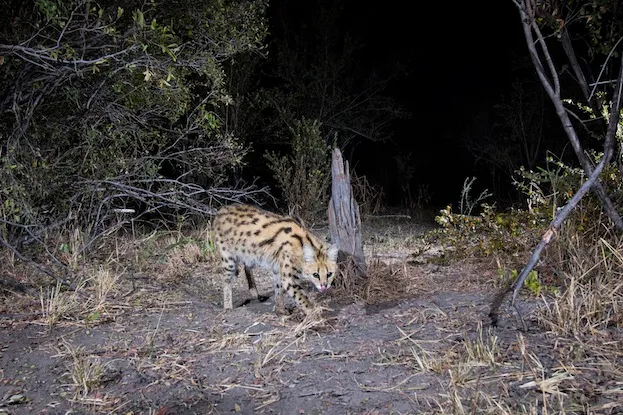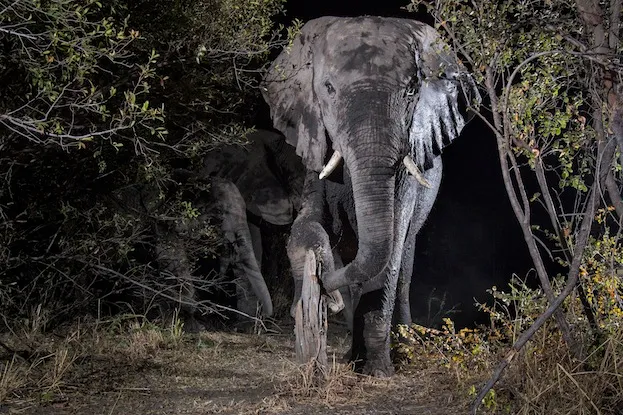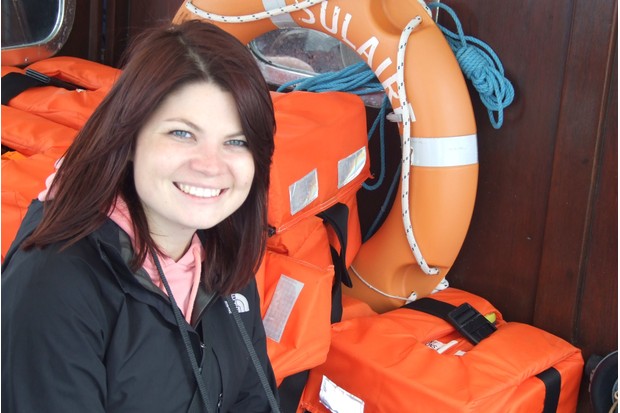Pictures of large carnivores in a mostly undocumented landscape in Namibia will enable scientists to better understand animal migration patterns and establish additional protected areas for nature.
Carnivore researcher Lise Hanssen documents the area’s wildlife and mitigates human-wildlife conflict, primarily the predation of livestock by big carnivores.
Cameraman Will Burrard-Lucas set up five camera-traps while on assignment for WWF to support Hanssen’s ongoing research.
He says, “Before this project started, nobody realised that these animals were even there.”

The camera-traps were used over a three-month period to secure high quality shots of elusive species at night in the Kavango Zambezi Transfrontier Conservation Area (KAZA).
The valuable photos survey land use and movements of wildlife without interfering with their daily activities. Lions, hyenas (below), elephants, bush pigs and servals (above) are just some of the species that have been captured on camera.

A highlight for Burrard-Lucas and Hanssen came when they managed to capture images of lions that had strayed into community areas.
Encompassing 109 million acres and crossing five southern Africa countries – Angola, Botswana, Namibia, Zambia and Zimbabwe – KAZA is the largest transboundary conservation area in the world.
It also provides habitat for nearly 50 per cent of Africa’s elephant population.

This region is intensely settled with people and livestock, and runs right through the middle of many wildlife corridors that cross multiple countries.
Documenting the wealth of wildlife using camera-traps makes a strong argument for protecting it.
The images will enable Hanssen to continue to work with game guards and government conservation managers to reduce human-wildlife conflict.
Find out more about the work of Lise Hanssen and Will Burrard-Lucas.
